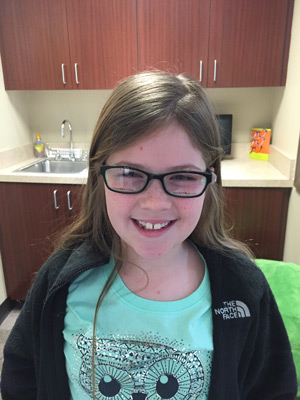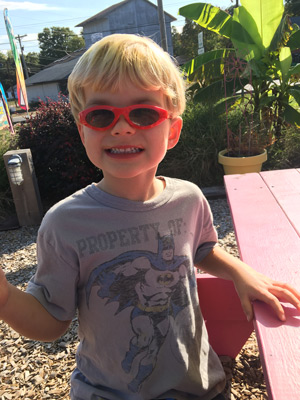Eye Care Services
Pediatric Vision Care
Pediatric Vision Care
When should children have their eyes examined?
According to the American Optometric Association (AOA), infants should have their first comprehensive eye exam at 6 months of age. Children then should receive additional eye exams at 3 years of age, and just before they enter kindergarten or the first grade at about age 5 or 6.
For school-aged children, the AOA recommends an eye exam every two years if no vision correction is required. Children who need eyeglasses or contact lenses should be examined annually or according to their eye doctor’s recommendations. It’s important for parents to make sure their children’s eyes are healthy. Approximately 80 percent of all learning during a child’s first 12 years comes through vision.
Good eye health and vision is important to your child’s learning, and vision problems can affect their performance in school. Undetected or untreated vision problems can hinder a child’s ability to perform to their full potential in school. In fact, many eye diseases can impair vision or lead to vision loss, which is why it is important for people of all ages to have their eyes checked regularly.

“The American Optometric Association guidelines recommend that all children have a complete vision and eye health examination at the age of 6 months, 3 years, upon entering kindergarten, and routine vision care (every 2 years) thereafter throughout their school years.”
Eye Care Services

Reports have estimated that up to 25% of students in grades K – 6 have vision-related problems, which may contribute to poor school performance and low self-confidence. The visual system matures rapidly during the first few years of life, thus early diagnosis of pediatric vision problems is essential.
To help children understand what to expect when visiting the eye doctor, the following are some aspects of the pediatric eye exam – explained in terms that children would understand:
Visual Acuity Measures how clearly you see objects
Refractive Status Measures how well you can see up close (nearsightedness or myopia), how well you can see far away (farsightedness or hyperopia), and the shape of your eye (astigmatism)
Ocular Health Looks at the overall health of your eye and checks for eye health problems (active pathology or congenital anomalies)
Eye Tracking Checks the ability for you to keep your eyes still (fixate) and move your eyes (smoothly follow and look between objects)
Eye Focusing Monitors the ability to change and sustain your focus while reading
Eye Teaming Checks the ability to use both eyes at the same time without working hard or getting tired
Eye teaming, the ability to coordinate both eyes accurately and without fatigue or excessive effort, is particularly important in children. Accurate eye teaming is vital for accurate two-eyed depth perception or stereopsis.
Hand – Eye Coordination
As part of the visual examination we also assess vision development. Young children use vision to explore the world by identifying and directing movement. Early intervention is crucial if a problem in vision is preventing adequate development of perception and eye-hand coordination skills.
